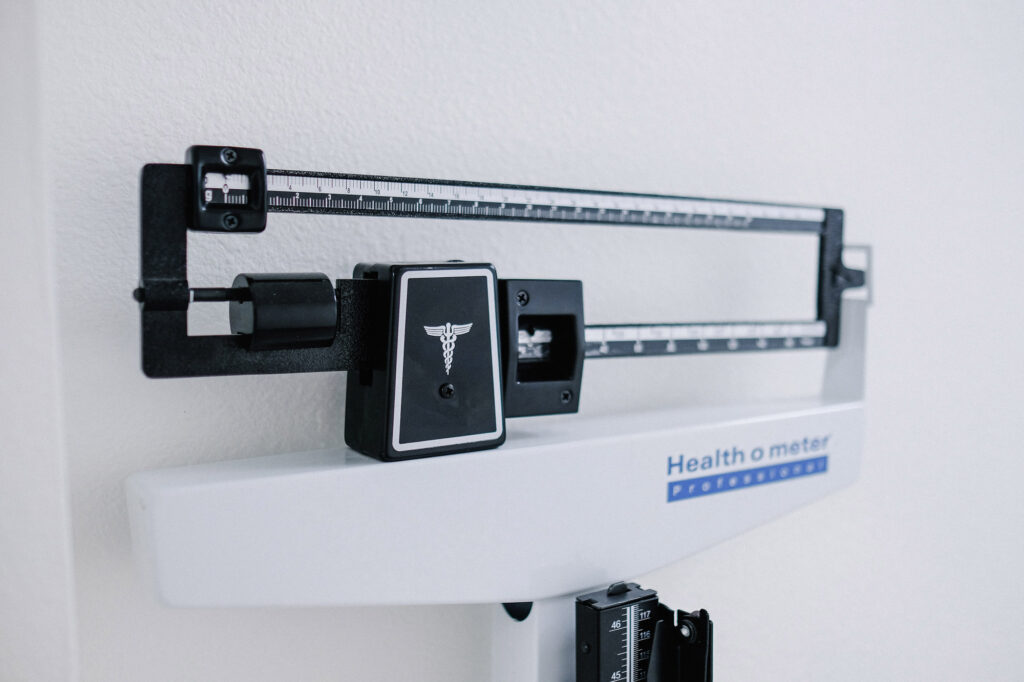
There are many different ways to lose unwanted fat on the body. However, many of the regimes currently popular can work in the short term but actually result in INCREASED rebound fat gain in the future. This is because the body’s muscle mass decreases and thus metabolism (how quickly we burn calories each 24 hours) decreases, rendering the body to store fat quickly thereafter. This phenomenon is a normal physical adaptation to famine. If the energy intake decreases (insufficient food available to satisfy the body’s requirements), the body effectively learns how to ‘hoard’ food, promoting rebound weight gain (especially around the waistline). Each time a rapid weight loss occurs, followed by a rebound fat gain (yo-yo dieting), research has shown increased risk of developing lifestyle disorders due to the resultant desensitization of insulin (this is known as INSULIN RESISTANCE and leads to metabolic syndrome: central obesity, high cholesterol, increased blood pressure, gout and ultimately type 2 diabetes).
So, the original and simple (CALORIES IN) – (CALORIES OUT) = WEIGHT GAIN / LOSS is not often effective in the long-term.

We need to approach fat loss a little more scientifically and manage the following issues:
- Plasma glucose control,
- Insulin production,
- Maintenance of (or even increase in) muscle mass and metabolism,
- Fat loss directed at waistline (visceral) fat,
- Long-term sustainability (easy, sociable and practical, avoiding hunger and controlling cravings, whilst tailored to the individual’s culture, budget, time constraints, accompanying health issues)
- Delicious-tasting (moving away from the bland, monotonous ‘diet mentality’) and
- Psychological aspects: freeing the mind from fear and confusion surrounding nutrition, health and weight loss.
“A DIETICIAN is a degreed medical professional, registered with the HPCSA, and is the only practitioner legally qualified to dispense dietary therapy for physical disorders. Be careful of ‘diet gurus’, ‘health coaches’ or personal trainers that attempt to give dietary advice. They are not registered to do so; often times this advice leads to effective weight loss in the short term but leads to long-term problems for which they are free from accountability because they are not registered.”


A newer approach to fat loss starts with the currently recognised Prudent Diet (which maintains health and prevents lifestyle disorders), and adjusts it towards a therapeutic diet specifically targeting truncal fat loss and muscle maintenance.
In order to keep the muscle tone high (i.e. the calorie-burning capacity of the muscles), we need to keep delivery of glucose consistent, hence maintenance of the carbohydrate intake in the diet.
Eating correct portions of LOW GI carbohydrates every three hours maintains muscle tone and metabolic activity throughout the day, maximising the amount of fat being burned from the waistline. It also promotes “PROTEIN SPARING” which allows ALL ingested protein to be used for muscle repair and building, further increasing metabolic output.
Cut right down on fat and oil intake, eat plenty of fresh fruits and vegetables, have only fat-free dairy or plant-based milks, eat only very lean animal proteins or, better still, plant-based proteins and make sure your dietician helps you tailor your plan to your lifestyle and preferences.
Remember, you SHOULD love your food!
Glycaemic Index list
for common carbohydrates eaten in South Africa.
Hi GI Carbohydrates (stimulate insulin production and do NOT favour fat loss):
Glucose, all wheat flour, bread (unless it is specifically LOW GI BREAD), rice cakes, rice noodles, crackers, Weetbix, ProNutro Wheat Free, cornflakes, mielie papa, potatoes, pasta made from wheat flour, pure honey, sports drinks.
Medium GI Carbohydrates (only stimulate a moderate amount of insulin, so can be included in MODERATION for effective fat loss):
Cane sugar, raw honey, basmati rice, risotto rice, samp and beans, baby potatoes with their skins, cous cous, rye bread, Ryvita, oats porridge cooked with water.
Low GI Carbohydrates (barely stimulate insulin production and keep plasma glucose levels stable for 3 hours. Good for fat loss):
Popcorn, LOW GI BREAD, Provita, brown rice, Tastic white rice, sushi rice, Spekko Basmati rice, oats porridge (if cooked with no water, only fat free milk/soya milk/almond milk), Future Life cereal, mielies, 100% Durum Wheat pasta, pearled barley, bulgur wheat, quinoa, kidney beans, butter beans, cannellini beans, chick peas, lentils, ProNutro Wholewheat Original, cold baby potatoes, Vital LOW GI muesli, Fibre Bran ‘sticks’, sweet potato.
(Courtesy of the GI Foundation S.A.)
Receive free monthly nutrition information by subscribing to the newsletters


